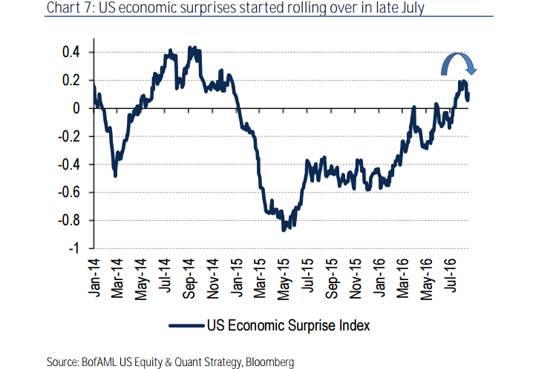Climbing the rickety stack of financial expectations

The stock market has already priced in anything you read in The Wall Street Journal about stocks. So they fill space with an elaborate passel of theories that’s obscure enough that you might think the market doesn’t understand it yet. That’s fine, so long as you realize it’s for entertainment purposes only.
Markets reporters at a paper like the Journal have a problem. They want to write something intelligent people can use to make decisions about where stocks are going in the future. They can’t write about macroeconomic news, like the unemployment rate, because the market instantly corrects for them once they’re announced. They can’t write about corporate earnings — same thing.
So the markets reporter has to root out increasingly obscure theories whose correlations with actual market moves are tenuous. By definition, if a prediction is in the paper, it’s questionable, because if it was an observation that reliably moved markets, they would already have moved. Wall Street’s computers move way faster than you reading an article in the Journal.
So we get absurd articles like “Four Charts to Scare the Stock Market Bulls” by Ben Eisen, featuring quotes like this:
“As the market grinds higher, we continue to see elevated risk of correction,” say Bank of America Merrill Lynch analysts, led by Savita Subramanian.
Translation: Stocks that go up can go down. Thanks for that insight, Ms. Subramanian.
Subramanian’s analysis, documented by Eisen, has more twists and turns than an episode of “Law and Order.” Here’s a sample:
An index measuring economic “surprises” suggests data is isn’t coming in quite as strong as it was relative to expectations. The index, which is positive when data in aggregate beat the consensus view and negative when data miss forecasts, appears to have peaked in late July and is now turning lower, though it’s still above zero.

OK. Let’s pick this apart. It’s a towering stack of assumptions.
- If earnings go up, stocks go up, because the companies are worth more.
- Analyst expectations estimate earnings. Stock prices reflect those expectations.
- When companies beat expectations, their stock prices go up, because they did better than the stock price reflected. That’s an earnings “surprise.” The more surprises, the higher the market goes.
- Maybe people are expecting more surprises. That would mean that stocks are higher because the market is smarter than the analysts, and knows that company earnings are going to be better than the analysts think.
- The number of surprises has gone down a little, but is still positive. (In case this is hard to spot, we’ve put a suggestive curved arrow in the chart.) Normally this would mean that stocks would still be rising, because surprises mean the company did better than the analysts expected. But if you’ve become used to expecting surprises, you’re getting fewer than you thought you would. So stocks could go down.
If you base your investment choices on analysis like this, you’re nuts. Even if this was right, don’t you think the market would have priced it in already?
In the “your mileage may vary” department, note how Eisen hedges. This paragraph includes the weasel words “suggests,” “isn’t coming in quite as strong,” and “appears to have.” That’s an 18% weasel density, a clear signifier of bullshit.
Here’s what will happen now. If the market goes down, Subramanian looks smart — although people will cite a dozen other reasons that might have caused it. If it goes up, Subramanian keeps her job, because her job was to assess risk, not to actually make predictions, so she can say that the risks were real (and when it does eventually go down, which it will, she’ll look prescient). And Eisen will keep writing, because there’s a space to fill on the Markets section.
Market speculation based on fifth-order effects is entertainment, not news. Enjoy it. Just don’t bet your 401(k) on it.
I get a kick when “analysts” pinpoint weather or rumbling in obscure sociopolitical movements as the cause of today’s market shift. Then people scoff at Ouija boards.
I appreciate this reflection Josh – one I must verbalize nearly once a week when concerned clients of our firm attempt to digest and respond to media noise. Poor professionals feed the monster when their compensation is linked to activity. Conversely, we’re at our best when we convince those we serve of the certainty of uncertainty.